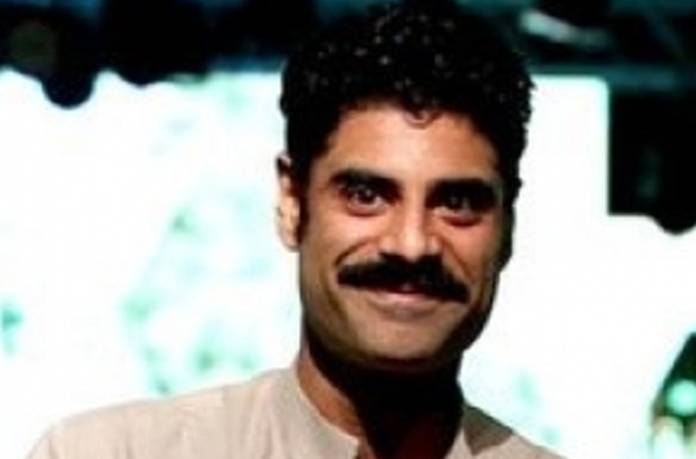Rakesh Sharma: India's First Astronaut - His Journey And Current Life

Table of Contents
Early Life and Education of Rakesh Sharma
Rakesh Sharma's journey began in Patiala, India, where he was born on January 13, 1949. His biography reveals a childhood filled with curiosity and a passion for aviation. His academic excellence paved the way for a distinguished career.
-
Education: Rakesh Sharma pursued his education at prestigious institutions, including St. Edward's School in Shimla and the National Defence Academy (NDA) in Khadakwasla, Pune. He later graduated from the Indian Air Force Academy.
-
Early Interests: His fascination with flight began early, leading him to pursue a career in the prestigious Indian Air Force. His dedication and skill in the Air Force would be crucial for his later selection as an astronaut.
-
Key Accomplishments: Before the Soyuz T-11 mission, Rakesh Sharma was already a highly decorated pilot in the Indian Air Force, demonstrating his exceptional abilities and commitment to service.
Selection and Training for the Soyuz T-11 Mission
The Indo-Soviet space program marked a significant milestone in India's relationship with the Soviet Union. The selection process for the joint mission was incredibly rigorous, seeking an individual with exceptional physical and mental capabilities. Rakesh Sharma, with his exceptional piloting skills and unwavering dedication, was chosen.
-
Selection Process: The selection involved intense physical and psychological evaluations to ensure the astronaut could withstand the immense stresses of space travel.
-
Cosmonaut Training: His training took place primarily in the Soviet Union, at the Yuri Gagarin Cosmonaut Training Center (Star City). This involved:
- Survival training in diverse and extreme environments.
- Extensive training in operating spacecraft systems.
- Rigorous physical conditioning to prepare for the challenges of weightlessness.
- Zero gravity simulation training.
-
Training Duration: The rigorous training program spanned several months, preparing Sharma for the unique demands of the Soyuz T-11 mission.
The Historic Soyuz T-11 Mission and its Impact
Launched on April 3, 1984, the Soyuz T-11 mission marked a pivotal moment in Indian space history. Rakesh Sharma, along with two Soviet cosmonauts, Yuri Malyshev and Gennady Strekalov, embarked on this groundbreaking mission.
-
Mission Objectives: The mission involved a variety of scientific experiments and observations related to Earth's environment and space physics.
-
Rakesh Sharma's Role: Rakesh Sharma’s role included conducting various experiments, making observations, and communicating with ground control. His experiences provided invaluable data for research and future missions.
-
Scientific Experiments: Several experiments focused on remote sensing, materials science, and other key areas of scientific research, contributing significantly to the advancement of space science.
-
National and International Significance: Rakesh Sharma's mission ignited national pride and inspired a generation of Indians to pursue careers in science and engineering. It also boosted India's international standing in the realm of space exploration.
Life After the Mission and Contributions to India
Upon his return to Earth, Rakesh Sharma continued to serve the nation. His experience in space profoundly impacted his subsequent career.
-
Post-Mission Career: Rakesh Sharma continued his service in the Indian Air Force, rising through the ranks. He also held several key positions after his retirement.
-
Awards and Recognitions: He received numerous accolades and awards in recognition of his exceptional service and contribution to India’s space program. The most prominent award is undoubtedly the Ashoka Chakra.
-
Contributions to India: His experience helped shape the future direction of India's space program and inspired many to pursue careers in STEM fields.
Rakesh Sharma's Current Life and Legacy
While details of Rakesh Sharma's current life are largely private, his legacy continues to inspire. His achievement remains a powerful symbol of India's potential.
-
Ongoing Influence: His mission continues to serve as a source of inspiration for aspiring Indian astronauts and scientists.
-
Role Model: Rakesh Sharma stands as a role model, proving that dedication and perseverance can lead to extraordinary accomplishments.
-
Impact on Indian Youth: He serves as an inspiration for the youth of India to pursue their dreams in the fields of science, technology, engineering and mathematics (STEM).
Conclusion: Celebrating the Legacy of India's First Astronaut
Rakesh Sharma's journey, from his early life to his pioneering space mission and subsequent career, is a testament to human potential and the power of national ambition. His flight aboard Soyuz T-11 was not merely a trip to space; it was a giant leap for India's aspirations in space exploration. His legacy continues to inspire generations of Indian scientists and astronauts, solidifying his place in history as a true pioneer. Learn more about Rakesh Sharma and the incredible achievements of the Indian Space Research Organisation (ISRO) – their work continues to shape India's future in space.

Featured Posts
-
 New Funding Injects Momentum Into Madeleine Mc Cann Case
May 09, 2025
New Funding Injects Momentum Into Madeleine Mc Cann Case
May 09, 2025 -
 Analysis Chinas Steel Output Reduction And Its Effect On Iron Ore
May 09, 2025
Analysis Chinas Steel Output Reduction And Its Effect On Iron Ore
May 09, 2025 -
 U S Fed Holds Rates Amid Inflation And Unemployment Concerns
May 09, 2025
U S Fed Holds Rates Amid Inflation And Unemployment Concerns
May 09, 2025 -
 Bayern Muenchen Inter Ja Psg Jatkavat Mestarien Liigan Puolivaelieriin Taeydellinen Otteluraportti
May 09, 2025
Bayern Muenchen Inter Ja Psg Jatkavat Mestarien Liigan Puolivaelieriin Taeydellinen Otteluraportti
May 09, 2025 -
 The Bubble Blasters And Other Chinese Goods Trade Chaos And Its Impact
May 09, 2025
The Bubble Blasters And Other Chinese Goods Trade Chaos And Its Impact
May 09, 2025
Latest Posts
-
 Elon Musks Net Worth Falls Below 300 Billion Teslas Troubles And Tariff Impacts
May 09, 2025
Elon Musks Net Worth Falls Below 300 Billion Teslas Troubles And Tariff Impacts
May 09, 2025 -
 Kaitlin Olson And The High Potential Repeats On Abc In March 2025
May 09, 2025
Kaitlin Olson And The High Potential Repeats On Abc In March 2025
May 09, 2025 -
 High Potential Repeat Episodes On Abc In March 2025 Analyzing The Programming Strategy
May 09, 2025
High Potential Repeat Episodes On Abc In March 2025 Analyzing The Programming Strategy
May 09, 2025 -
 How To Check Madhyamik Result 2025 And Merit List
May 09, 2025
How To Check Madhyamik Result 2025 And Merit List
May 09, 2025 -
 The High Potential Of David A New Perspective On Morgans Weaknesses
May 09, 2025
The High Potential Of David A New Perspective On Morgans Weaknesses
May 09, 2025
